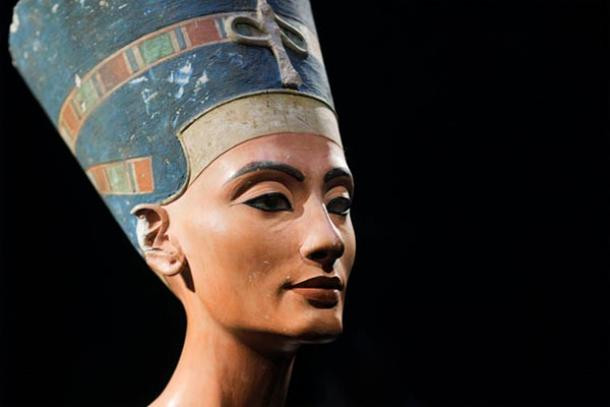Search for Queen Nefertiti reveals hidden passages in Tutankhamun's tomb

Speculation is mounting that the tomb of Nefertiti – an ancient queen of Egypt – could be discovered inside a hidden chamber in the tomb of King Tutankhamun. It would represent "one of the most important finds of the century", said Egypt's antiquities minister, Mamdouh Eldamaty.
Archaeologists concluded that there are unopened sections behind two hidden doorways inside Tutankhamun's ancient burial site. The discovery was made by analysing radar scans taken over two days by Japanese specialist Hirokatsu Watanabe.
"The radar scan tells us that on this side of the north wall, we have two different materials," Eldamaty told a press conference on Saturday. "We believe that there could be another chamber."
The findings appear to bolster the theory of British archaeologist Dr Nicolas Reeves, of the University of Arizona, who claimed to have had discovered a secret passageway within Tutankhamun's tomb after analysing high-definition photographs. Writing in an August Armana Royal Tombs Project paper, Reeves said that the implications of such a discovery would be "extraordinary".
"If digital appearance translates into physical reality, it seems we are now faced not merely with the prospect of a new, Tutankhamun-era storeroom to the west," he said.
Two tombs in one
When Nefertiti – an ancient queen of Egypt and the chief consort and wife of the pharaoh Akhenaten – died, Reeves theorised that she was buried by her stepson, Tutankhamun. But when Tutankhamun died at the age of 18, his subjects decided to extend his stepmother's tomb, rather than build a new one.
Following the examination of the radar scans Reeves, a former curator in the former Department of Egyptian Antiquities in the British Museum, told National Geographic that everything was "adding up".

"The tomb is not giving up its secrets easily," he said. "But it is giving them up, bit by bit. It's another result. And nothing is contradicting the basic direction of the theory."
His theory has yet to be peer-reviewed and leading Egyptologists have urged caution over the conclusion.
Reeves also claimed earlier this week that he found new evidence suggesting the death mask of Tutankhamun was made for Nefertiti, and not for him.
Pointing to a cartouche, a royal name stamp, that appears to have been retouched as evidence to support his theory Reeves, told Egyptian the news service Ahram Online that the stamp concealed traces of another name: "Ankhkheprure Nefernefruaten" that can be translated to Queen Nefertiti.
"Blinded by the piece's sheer beauty and enormous bullion worth… world has looked and yet has completely failed to see – that the gold mask had never been intended for Tutankhamun at all," he said.
Other features that back Reeves' theory that the death mask was intended for a woman include the presence of pierced ears. In almost all other ancient Egyptian depictions, pierced ears were a feature only reserved for queens and children.
© Copyright IBTimes 2025. All rights reserved.





















